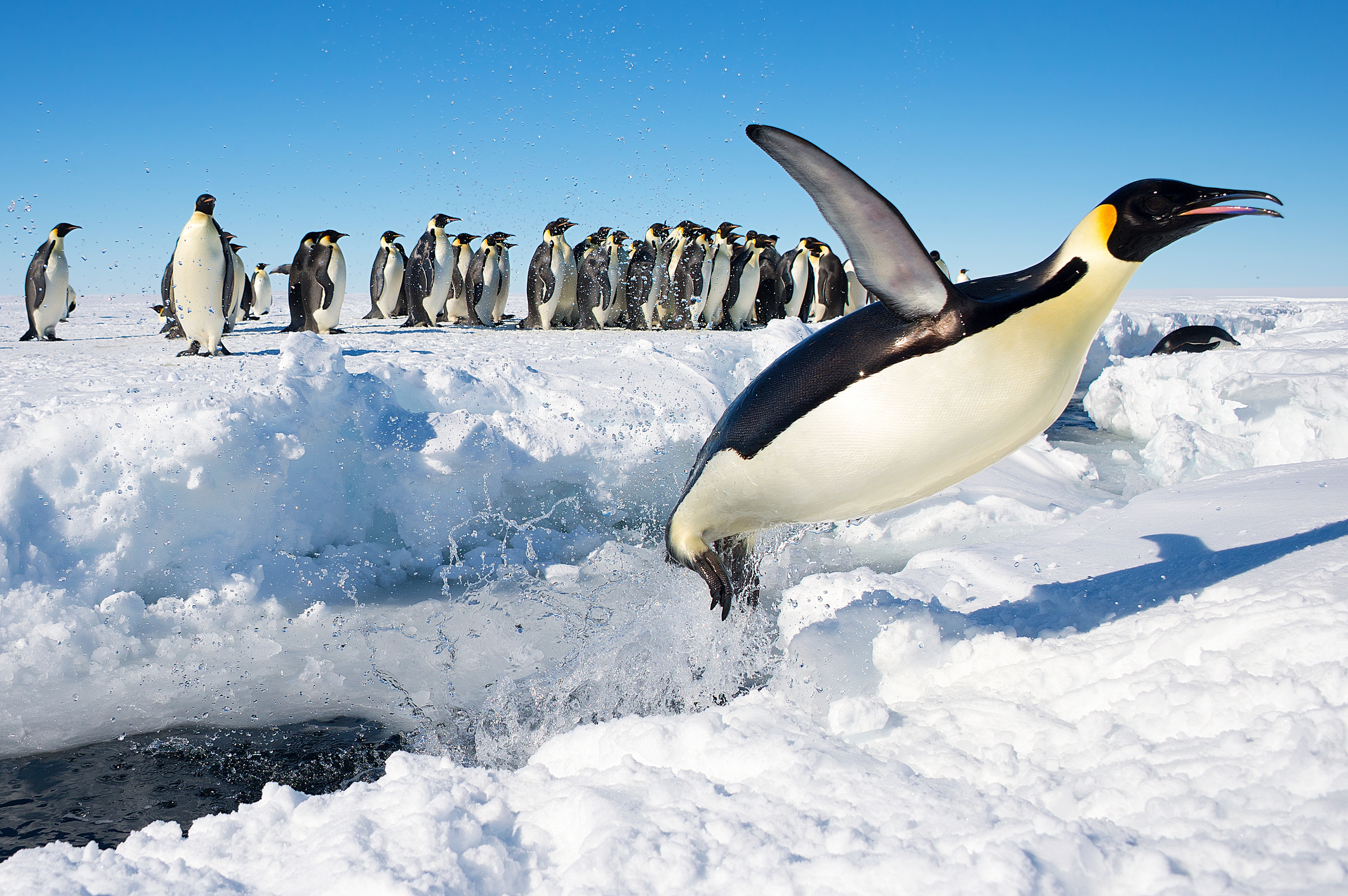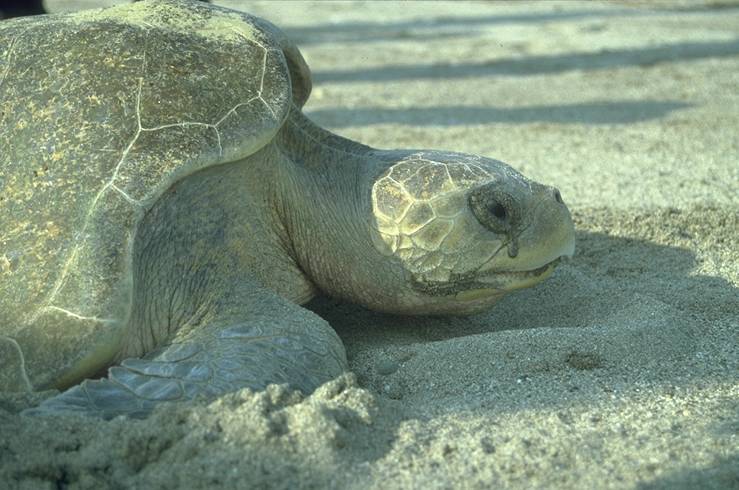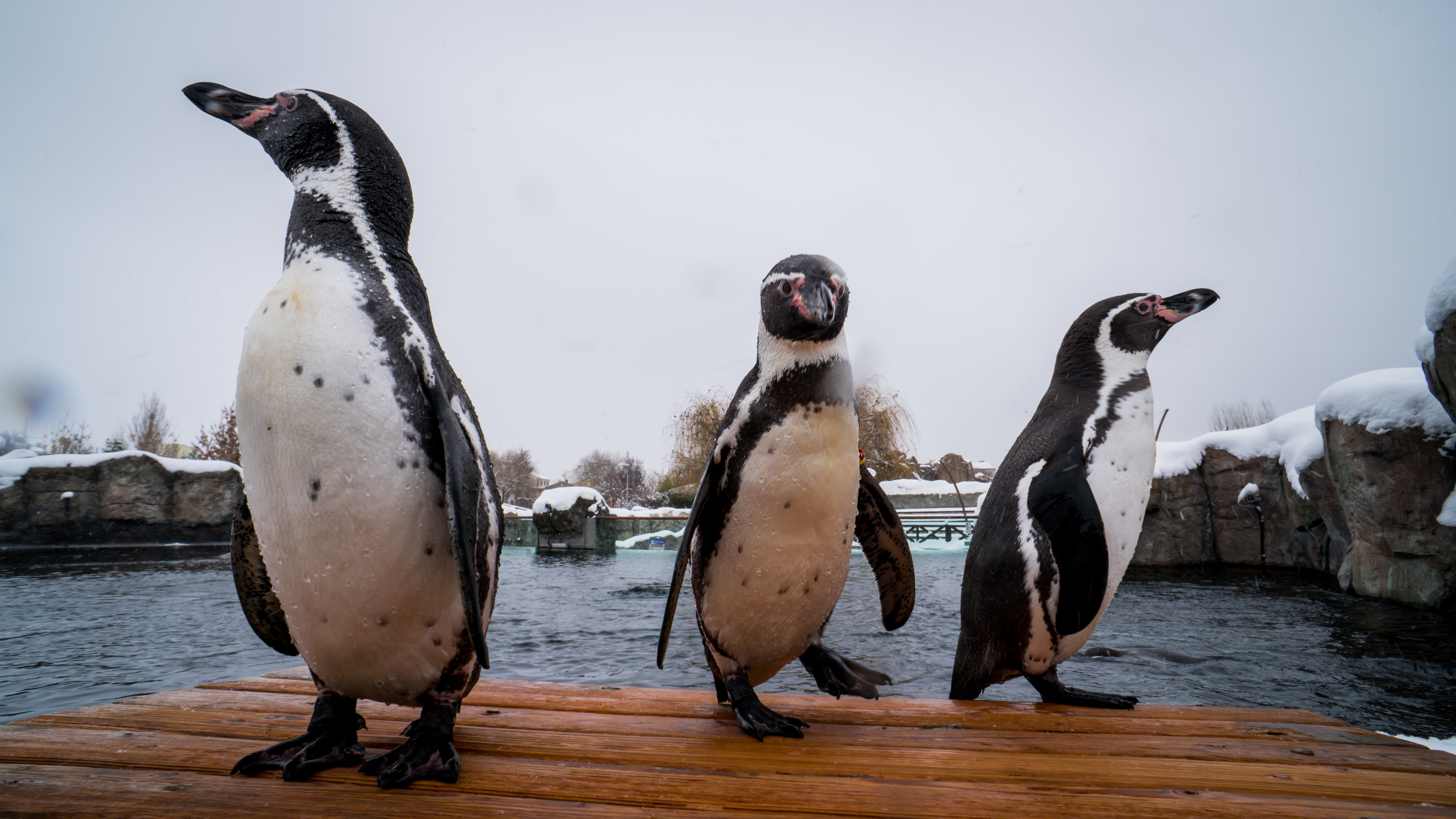|
Spheniscus Megaramphus
''Spheniscus megaramphus'' (from Greek; ''megas'', 'large', and ''ramphos'', 'beak') is an extinct species of penguin that lived during the Late Miocene (present Peru) South America. It is notable for being the largest known species of banded penguin, along with having a proportionally large beak. The species was described in 2003 by Marcelo Stucchi based on fossils found in the fossiliferous Pisco Formation of the Pisco Basin, southwestern Peru. At about three feet in height, ''Spheniscus megaramphus'' was significantly larger and more robust than any living banded penguin. The beak of ''S. megaramphus'' is also proportionally much larger compared to extant banded penguins; the beak of ''S. megaramphus'' exceeds the length of its cranium, whereas the Humboldt penguin The Humboldt penguin (''Spheniscus humboldti'') is a medium-sized penguin. It resides in South America, its range mainly contains most of coastal Peru. Its nearest relatives are the African penguin, the Mage ... [...More Info...] [...Related Items...] OR: [Wikipedia] [Google] [Baidu] |
Penguin
Penguins ( order Sphenisciformes , family Spheniscidae ) are a group of aquatic flightless birds. They live almost exclusively in the Southern Hemisphere: only one species, the Galápagos penguin, is found north of the Equator. Highly adapted for life in the water, penguins have countershaded dark and white plumage and flippers for swimming. Most penguins feed on krill, fish, squid and other forms of sea life which they catch with their bills and swallow it whole while swimming. A penguin has a spiny tongue and powerful jaws to grip slippery prey. They spend roughly half of their lives on land and the other half in the sea. The largest living species is the emperor penguin (''Aptenodytes forsteri''): on average, adults are about tall and weigh . The smallest penguin species is the little blue penguin (''Eudyptula minor''), also known as the fairy penguin, which stands around tall and weighs . Today, larger penguins generally inhabit colder regions, and smaller penguins in ... [...More Info...] [...Related Items...] OR: [Wikipedia] [Google] [Baidu] |
Spheniscus Muizoni
''Spheniscus muizoni'' is an extinct species of banded penguins that lived during the early Late Miocene in what is now Peru, South America. The species, the earliest member of the extant genus, was described in 2007 by Ursula B. Göhlich based on fossils found in the fossiliferous Pisco Formation of the Pisco Basin, southwestern Peru. Discovery and naming Fossils of ''Spheniscus muizoni'' were found by French paleontologist Christian de Muizon in sediments belonging to the Pisco Formation at the locality Cerro la Bruja in the middle of the Pisco Basin. The material is owned by the Muséum National d'Histoire Naturelle in Paris.Göhlich, 2007, p.286 The species epithet was chosen in honour of De Muizon, who has greatly contributed to the faunal descriptions of the Pisco Formation and other areas in Peru. Description The holotype material consists of a partial postcranial skeleton, subcomplete left and right coracoid, subcomplete right scapula, a subcomplete left and righ ... [...More Info...] [...Related Items...] OR: [Wikipedia] [Google] [Baidu] |
Miocene Birds Of South America
The Miocene ( ) is the first geological epoch of the Neogene Period and extends from about (Ma). The Miocene was named by Scottish geologist Charles Lyell; the name comes from the Greek words (', "less") and (', "new") and means "less recent" because it has 18% fewer modern marine invertebrates than the Pliocene has. The Miocene is preceded by the Oligocene and is followed by the Pliocene. As Earth went from the Oligocene through the Miocene and into the Pliocene, the climate slowly cooled towards a series of ice ages. The Miocene boundaries are not marked by a single distinct global event but consist rather of regionally defined boundaries between the warmer Oligocene and the cooler Pliocene Epoch. During the Early Miocene, the Arabian Peninsula collided with Eurasia, severing the connection between the Mediterranean and Indian Ocean, and allowing a faunal interchange to occur between Eurasia and Africa, including the dispersal of proboscideans into Eurasia. During the late ... [...More Info...] [...Related Items...] OR: [Wikipedia] [Google] [Baidu] |
Extinct Penguins
Extinction is the termination of a kind of organism or of a group of kinds (taxon), usually a species. The moment of extinction is generally considered to be the death of the last individual of the species, although the capacity to breed and recover may have been lost before this point. Because a species' potential range may be very large, determining this moment is difficult, and is usually done retrospectively. This difficulty leads to phenomena such as Lazarus taxa, where a species presumed extinct abruptly "reappears" (typically in the fossil record) after a period of apparent absence. More than 99% of all species that ever lived on Earth, amounting to over five billion species, are estimated to have died out. It is estimated that there are currently around 8.7 million species of eukaryote globally, and possibly many times more if microorganisms, like bacteria, are included. Notable extinct animal species include non-avian dinosaurs, saber-toothed cats, dodos, m ... [...More Info...] [...Related Items...] OR: [Wikipedia] [Google] [Baidu] |
Spheniscus
The banded penguins are penguins that belong to the genus ''Spheniscus''. There are four living species, all with similar banded plumage patterns. They are sometimes also known as "jack-ass penguins" due to their loud locator calls sounding similar to a donkey braying. Common traits include a band of black that runs around their bodies bordering their black dorsal coloring, black beaks with a small vertical white band, distinct spots on their bellies, and a small patch of unfeathered or thinly feathered skin around their eyes and underdeveloped fluff sack that can be either white or pink. All members of this genus lay eggs and raise their young in nests situated in burrows or natural depressions in the earth. Systematics Banded penguins belong to the genus ''Spheniscus'', which was introduced by the French zoologist Mathurin Jacques Brisson in 1760 with the African penguin (''Spheniscus demersus'') as the type species. The genus name ''Spheniscus'' is derived from the Ancient ... [...More Info...] [...Related Items...] OR: [Wikipedia] [Google] [Baidu] |
Fossils Of Peru
A fossil (from Classical Latin , ) is any preserved remains, impression, or trace of any once-living thing from a past geological age. Examples include bones, shells, exoskeletons, stone imprints of animals or microbes, objects preserved in amber, hair, petrified wood and DNA remnants. The totality of fossils is known as the ''fossil record''. Paleontology is the study of fossils: their age, method of formation, and evolutionary significance. Specimens are usually considered to be fossils if they are over 10,000 years old. The oldest fossils are around 3.48 billion years old to 4.1 billion years old. Early edition, published online before print. The observation in the 19th century that certain fossils were associated with certain rock strata led to the recognition of a geological timescale and the relative ages of different fossils. The development of radiometric dating techniques in the early 20th century allowed scientists to quantitatively measure the absolute ... [...More Info...] [...Related Items...] OR: [Wikipedia] [Google] [Baidu] |
Salt Gland
The salt gland is an organ for excreting excess salts. It is found in the cartilaginous fishes subclass elasmobranchii (sharks, rays, and skates), seabirds, and some reptiles. Salt glands can be found in the rectum of sharks. Birds and reptiles have salt glands located in or on the skull, usually in the eyes, nose, or mouth. These glands are lobed containing many secretory tubules which radiate outward from the excretory canal at the center. Secretory tubules are lined with a single layer of epithelial cells. The diameter and length of these glands vary depending on the salt uptake of the species. Salt glands maintain salt balance and allow marine vertebrates to drink seawater. Active transport via sodium–potassium pump, found on the basolateral membrane, moves salt from the blood into the gland, where it is excreted as a concentrated solution. In birds The avian salt gland has two main ducts which are a medial and a lateral. Salt gland activations occurs from increa ... [...More Info...] [...Related Items...] OR: [Wikipedia] [Google] [Baidu] |
Spheniscus Megaramphus S Urbinai And S Humboldti
The banded penguins are penguins that belong to the genus ''Spheniscus''. There are four living species, all with similar banded plumage patterns. They are sometimes also known as "jack-ass penguins" due to their loud locator calls sounding similar to a donkey braying. Common traits include a band of black that runs around their bodies bordering their black dorsal coloring, black beaks with a small vertical white band, distinct spots on their bellies, and a small patch of unfeathered or thinly feathered skin around their eyes and underdeveloped fluff sack that can be either white or pink. All members of this genus lay eggs and raise their young in nests situated in burrows or natural depressions in the earth. Systematics Banded penguins belong to the genus ''Spheniscus'', which was introduced by the French zoologist Mathurin Jacques Brisson in 1760 with the African penguin (''Spheniscus demersus'') as the type species. The genus name ''Spheniscus'' is derived from the Ancient G ... [...More Info...] [...Related Items...] OR: [Wikipedia] [Google] [Baidu] |
Humboldt Penguin
The Humboldt penguin (''Spheniscus humboldti'') is a medium-sized penguin. It resides in South America, its range mainly contains most of coastal Peru. Its nearest relatives are the African penguin, the Magellanic penguin and the Galápagos penguin. The Humboldt penguin and the cold water current it swims in both are named after the explorer Alexander von Humboldt. The species is listed as vulnerable by the IUCN with no population recovery plan in place. The current population is composed of 32,000 mature individuals and is going down. It is a migrant species. Humboldt penguins nest on islands and rocky coasts, burrowing holes in guano and sometimes using scrapes or caves. In South America the Humboldt penguin is found only along the Pacific coast, and the range of the Humboldt penguin overlaps that of the Magellanic penguin on the central Chilean coast. It is vagrant in Ecuador and Colombia. The Humboldt penguin has been known to live in mixed species colonies with the Ma ... [...More Info...] [...Related Items...] OR: [Wikipedia] [Google] [Baidu] |
Messinian
The Messinian is in the geologic timescale the last age or uppermost stage of the Miocene. It spans the time between 7.246 ± 0.005 Ma and 5.333 ± 0.005 Ma (million years ago). It follows the Tortonian and is followed by the Zanclean, the first age of the Pliocene. The Messinian overlaps the Turolian European Land Mammal Mega Zone (more precisely MN 12 and 13) and the Pontian Central European Paratethys Stage. It also overlaps the late Huayquerian and early Montehermosan South American Land Mammal Ages, and falls inside the more extensive Hemphillian North American Land Mammal Age. During the Messinian, around 6 million years ago, the Messinian salinity crisis took place, which brought about repeated desiccations of the Mediterranean Sea. Definition The Messinian was introduced by Swiss stratigrapher Karl Mayer-Eymar in 1867. Its name comes from the Italian city of Messina on Sicily, where the Messinian evaporite deposit is of the same age. The base of the Messinia ... [...More Info...] [...Related Items...] OR: [Wikipedia] [Google] [Baidu] |
Pisco Basin
Pisco Basin ( es, Cuenca de Pisco) is a sedimentary basin extending over in southwestern Peru.Solís Mundaca, 2018, p.1 The basin has a thick sedimentary fill, which is about half the thickness of more northern foreland basins in Peru. The oldest known sediments are the Eocene sandstones of the Caballas Formation, while the youngest deposits, the fossiliferous Pisco Formation, date to the Early Pleistocene. In relation to present-day, topography the fill of Pisco Basin makes the upper part of the Coastal Cordillera of southern Peru, the coastal plains, the Ica-Nazca Depression and the Andean foothills. The basin is renowned for hosting various highly fossiliferous stratigraphic units; the Pisco Formation has provided a wealth of marine mammals (including sloths), birds, fish and other groups, as have the Chilcatay, Otuma and Yumaque Formations. Stratigraphy Tectonic and sedimentary evolution The basin developed in a setting of extensional tectonics from Eocene to t ... [...More Info...] [...Related Items...] OR: [Wikipedia] [Google] [Baidu] |




.jpg)



